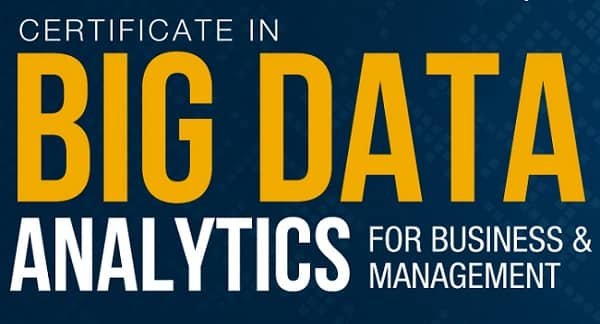Big Data plays a significant role in today’s data-driven industry. With the increasing adoption of big data, there is increasing stress on data visualisation. If you do not know much about data visualisation, then do not worry. By the end of this article, you will have a basic idea of what data visualisation is and which course you should pursue to learn about data visualisation. You should note that data visualisation course has become an essential skill because visualisation helps in the simple representation of the data. Moreover, almost every organisation is becoming heavily dependent on data for its operations, decision-making, and everything else.
Data visualisation helps in interpreting a large amount of data, and it also helps the user in analysing and digesting the data. Data visualisation makes it easy for the user to understand the complex data, which would have been difficult to interpret in the form of raw data. Since it is easy to understand the data visually, data visualisation is gaining a lot of traction. Most of the management business review and management reports have data in the form of graphs and charts, which ensures that the people up in the management do not have to spend a lot of time while understanding the data. By peeling the data set layers, the analyst performing data visualisation can give a new dimension to the data.
So why data visualisation?

You would have already noticed that every organisation is leveraging data visualisation to get access to information faster. This also helps the organisation in recognising the patterns and trends. With the help of this analysis, the future can be predicted very accurately. For example, looking at the past pattern, an associate can do the pattern analysis of Dominos Pizza’s demandon any given day. Based on the forecast, the outlet can plan its inventory and staffing. Using the data to plan the operations would also minimise wastage, and it will ensure that the opportunity is milked in the best possible way. In a way, data visualisation helps in optimising the expenditure and maximising the ROI for the user.
Another example of data visualisation can be the covid-19 dashboards that you see on the web these days. If you look at some of the dashboards, they depict the magnitude of infection on maps using the dots. They also show you the recovery trends in the form of graphs. The graphs and images on these dashboards are also interactive. You can click on a city, and the data for a particular city will be displayed on the screen. All these things have been made possible only via data visualisation.
Courses Available for data visualisation
Data visualisation is a relatively new course, so you would not find diploma or degree courses in this domain. Moreover, data visualisation is a smaller subset of big data or data analytics. In such a case, you will not find a proper degree course for data visualisation. You will come across many certificate programs for data visualisation, and you will also come across a lot of online courses for data visualisation. Another thing to note here is that there are multiple languages used in data visualisation. Knowing any one of those would give you an edge, and it will help you quickly understand the data visualisation. Some examples of these languages used for data visualisation are Tableau, Python, Advanced Excel, R, d3.js and many more.
Eligibility for Data Visualization Course
It is essential to understand some of the points about the eligibility criteria for the data visualisation course. You can check out the information in the points below
- You should note that data visualisation is not just limited to data analysts or data scientists. Anyone interested in the field can pursue the course.
- There is no domain where data visualisation cannot be used. It can be used in tech, finance, operations, health care, marketing, and every field you can think of. So, there is no need to worry about being from a specific background.
- There is no such basic qualification that you need to learn data visualisation. You can pursue the online courses, and you can check out the requirements of those courses.
- It is not necessary to have coding knowledge, but it is undoubtedly an add-on to know to code. Moreover, you can pursue the data visualisation course in the coding language or the data visualisation language that you know.
Enrolling for Data Visualization Course
We have shared the basic eligibility criteria for pursuing a data visualisation course. We are sure that you would be glad to know about the data visualisation courses’ minimal criteria. Below are the ways you can enrol for the data visualisation course.
- The first thing that we would like to mention is the offline data visualisation courses. Some institutes offer data visualisation course via classroom method, and you can opt for such courses. You need to reach out to the institute and complete the enrolment.
- Multiple websites offer you an online data visualisation course. You can enrol for such institutes by paying the fee directly. You can visit the websites like Coursera, Udemy, Pluralsight, LinkedIn Learning and Udacity and check out the available courses. Enrolling in the online course will give you the freedom to complete the course at your own pace.
Fee for Data Visualization Course
In the previous section, we have shared a lot of information about enrollment in the course. The next major thing is about the fee for data visualisation. You may be surprised to know about the cost involved with the data visualisation course. You can find a lot of free content on websites like YouTube, but if you are looking for a well-structured course then you should enrol for the course via one of the online course providers.
In terms of the cost, you can find data visualisation courses for less than Rs 10,000. Moreover, during the special discount days, you can find the data visualisation courses for as low as Rs 500. You can take advantage of such discount days,which will help you keep the cost of learning low. Each platform has a different pricing strategy, and you can check out the details on specific platforms to understand more about the fee associated with the data visualisation course.
Syllabus of Data Visualization Course
As mentioned earlier, data visualisation courses are available in different languages. The course content at a high level would remain the same, but the method of execution would change depending on the language you choose. For example, the significant difference between the data visualisation via Python and data visualisation via R would be in the method of execution and the syntax. You should also note that the syllabus would also vary from one course to another. So, we have listed the syllabus at a high level, but you can check the individual courses for more details of the syllabus
- Fundamentals of data visualisation
- Essential design principles for data visualisation
- Visual Analytics
- Data extraction & time series
- Creating charts, tables, maps and scatterplots
- Creating and Managing Dashboards
- Data manipulation (Blend, join, Calculate)
- Data visualisation Projects
- Reading Data Source
- Advance data visualisation
Career Options after Learning Data Visualization
If you are already working as a data scientist or data analyst, then the data visualisation will take you to the next step. Apart from developing complex data models, you will also be able to tell visual stories using the data. If you are working in a job involving working with management, then data visualisation will take you a level higher, and it will help you work closely with the management. Data Visualization is an add-on skill, and this skill will help you enhance your present job prospects. Having this add-on skill can help you with better appraisals, and you may even be able to find a job that deals with core data visualisation. Remember that the stakeholders are given all the information using the presentations, and data visualisation is the skill that can help you in delivering compelling business presentations.
Final Verdict
Data has always been the governing factor for making critical business decisions. With advance data analytics and data visualisation, this decision-making process has become a lot more accurate and precise. If you love working on data and would like to take a step ahead in your career, you can opt for a data visualisation course. Ensure that you are checking the course content thoroughly, as the course should cover all the critical concepts associated with data visualisation. If you know a language like Python, then you would find it very easy to complete the course. However, if you do not know any language, then you can start by learning data visualisation on the tableau. Tableau is specifically designed as a tool for data visualisation, and it is widely used in the industry. You can go through the pros and cons of the different data visualisation is you are starting afresh. These short courses will give you an edge professionally, and you can surely spare some time and complete the data visualisation courses. If you need any other information about these courses, please feel free to reach out to us. Thank You.

Rahul Kumar is a passionate educator, writer, and subject matter expert in the field of education and professional development. As an author on CoursesXpert, Rahul Kumar’s articles cover a wide range of topics, from various courses, educational and career guidance.



